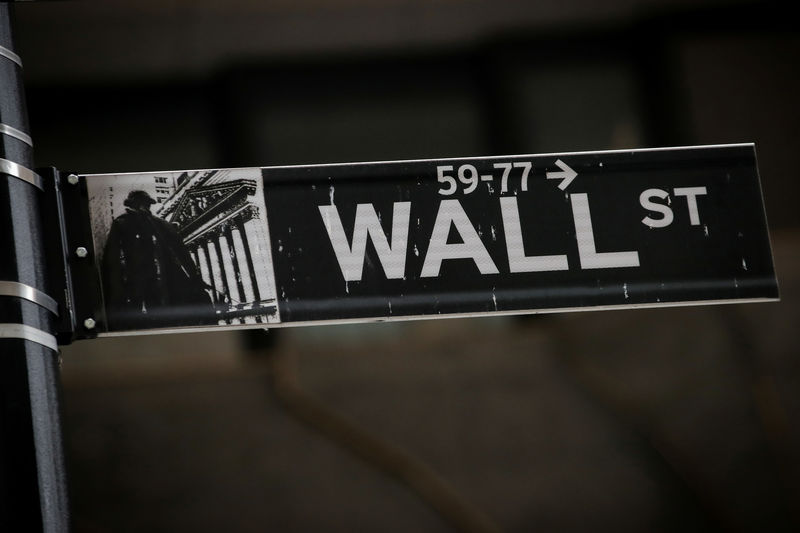By Chuck Mikolajczak
NEW YORK (Reuters) - U.S. equity markets are set up for a blast of volume on Friday, as investors prepare for news on the U.S.-China trade dispute from the Group of 20 meeting and the annual reconstitution of the Russell indexes, traditionally one of the largest trading days of the year.
The rebalance of the Russell indexes happens each year and becomes final on the fourth Friday in June. Stocks are added or deleted from Russell's family of indexes, including the Russell 1000 (RUI) large cap and Russell 2000 (RUT) small cap, prompting fund managers to adjust portfolios to reflect new weightings.
This telegraphed adjustment increases demand for buying and selling stocks, resulting in additional trading volume, which crests right before the market close on the fourth Friday.
This year's rebalance happens to coincide with the G20 meeting in Osaka, Japan, that will be highlighted by a meeting on Saturday between U.S. President Donald Trump and Chinese President Xi Jinping, putting investors on alert for any signs of a thaw or further breakdown in trade relations between the two world's two largest economies.
While the meeting between the two leaders will not take place until well after U.S. markets have closed on Friday, many expect there will be news on the trade front ahead of the meeting, similar to comments by U.S. Treasury Secretary Steve Mnuchin on Wednesday.
The timing has fueled comparisons to the rebalancing of Russell's indexes in 2016, which came on the heels of the vote for Britain to leave the European Union and resulted in nearly 15.3 billion shares traded in U.S. exchanges when all was said and done. That number has only been bested since by the 15.33 billion shares traded on Dec. 21, when the Nasdaq (IXIC) confirmed it was in a bear market and the S&P 500 (SPX) was en route to its worst December performance since 1931.
"It is always one of the biggest trading days of the year," said Nicholas Colas, co-founder at DataTrek Research in New York. "To me the one really different thing is this G20 meeting, and we are seeing the effect it has on market sentiment and anything can happen in Osaka."
Passive funds will rebalance on the day of the reconstitution to minimize any tracking error, while active managers try to take advantage of any price dislocations earlier, resulting in a surge of volume toward the market close as the reconstitution becomes final.
"People are gaming this out kind of through the month of June and trying to figure out what goes in and where," Colas said.
As of Dec. 31, 2017, about $9 trillion was benchmarked to or invested in products based on Russell U.S. indexes, according to FTSE Russell's most recent data. Approximately $1.2 trillion are in passive investment products such as exchange traded funds (ETFs) and mutual funds.
Ivan Cajic, Virtu Financial's Americas director of index and ETF research, projects turnover across the Russell 3000 <.RUA> to total about $70 billion.
According to Nasdaq, last year's rebalance resulted in nearly 1.19 billion shares, representing $39.26 billion, changing hands during its "closing cross" in 0.935 second.
Due to the size of the trade and the number of stocks involved, FTSE Russell takes steps to be transparent to market participants regarding its methodology for inclusion, which includes factors such as market capitalization, home country and company structure, while also releasing preliminary lists of stocks that may be affected.
Those steps allow Russell to continue with the rebalance despite events that may cause additional market volatility.
"(Brexit) was the test, I use that as an example," said Rolf Agather, managing director of North America applied research at FTSE Russell. "People say, 'Well you have the Brexit vote on the same day, what is Russell going to do?' We follow the rules and it works out pretty well."
While Russell has not made any major changes to its methodology for inclusion this year, many market participants will be watching the placement of many of the recent initial public offerings.
Because many of these companies waited to go public, their size is likely to put them right into Russell's large-cap indexes. Virtu's Cajic noted that stocks such as Uber Technologies (N:UBER), Lyft (O:LYFT) and Beyond Meat (O:BYND) have contributed to volatility across the names expected to be added to the Russell 1000 (RUI), which have underperformed stocks that are expected to be removed from the index.
Generally, stocks being added to an index would see an uptick in price while those being removed would show a decline.
Recent IPOs must have debuted before Russell's "rank day" this year of May 10 to be eligible in the rebalance. Russell adds IPOs after the rank day on a quarterly basis, and any IPOs that missed the cutoff, such as Slack Technologies (N:WORK), will have to wait until the next rank date, of Aug 17.
"Clearly for small-cap investors, they would’ve liked to have opportunities to own some of these stocks," said Steve DeSanctis, equity strategist at Jefferies in New York.
"You want stocks that have these good growth prospects and the fact they stayed private for so much longer, now they are out of their market cap," he said. "They never got a chance to swing at that particular pitch."
